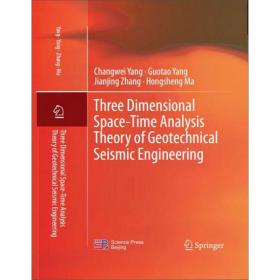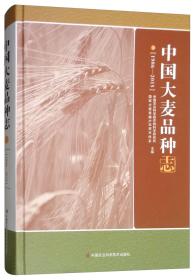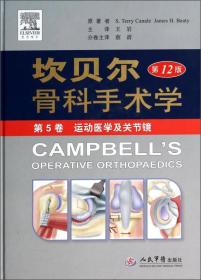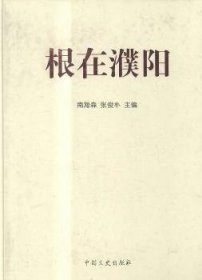
岩土地震工程三维时空分析理论(英文版)
正版图书
¥ 126.42 4.9折 ¥ 258 全新
库存6件
北京房山
认证卖家担保交易快速发货售后保障
作者Changwei、Yang、Guotao、Yang、Jianjing 著
出版社科学出版社
出版时间2020-01
装帧平装
货号R_9748259
上书时间2023-06-15
- 在售商品 暂无
- 平均发货时间 17小时
- 好评率 暂无
- 最新上架
商品详情
- 品相描述:全新
图书标准信息
- 作者 Changwei、Yang、Guotao、Yang、Jianjing 著
- 出版社 科学出版社
- 出版时间 2020-01
- 版次 1
- ISBN 9787030633026
- 定价 258.00元
- 装帧 平装
- 开本 16开
- 纸张 胶版纸
- 页数 366页
- 【内容简介】
- 《岩土地震工程三维时空分析理论(英文版)》从岩土工程的边坡、支挡结构以及场地三个方面借助现场地震台阵监测数据、数值模拟、多组大型振动台试验以及理论推导,实现定性分析到定量的分析,进而详细阐述相应的时频分析理论,以初步建立岩土地震工程的时频分析理论体系。
- 【目录】
-
1 Basis of Seismology
1.1 Introduction
1.2 The Internal Structure of the Earth
1.3 Seismogenesis and Earthquake Classification
1.3.1 The Macro-background of Seismogenesis――Plate Tectonics
1.3.2 Local Mechanism of Seismogenesis――Elastic Rebound Hypothesis
1.3.3 Improvement of the Elastic Rebound Hypothesis――Stick-Slip Theory
1.3.4 Earthquake Classification and Seismic Sequence
1.4 Propagation of Seismic Waves in Infinite Elastic Solid
1.4.1 Wave Equation
1.4.2 Propagation of Elastic Wave
1.5 Reflection and Refraction of Seismic Wave
1.5.1 Reflection of Seismic Wave on Free Surface
1.5.2 Reflection and Refraction of Seismic Wave on Interface Between Media
Bibliography
2 Analysis Technics of Seismic Signals
2.1 Calibration Transformation
2.2 Eliminating the Signal Trend
2.2.1 Least-Squares-Fit Method
2.2.2 Wavelet Method
2.2.3 Sliding Average Method
2.3 Digital Filtering
2.3.1 Frequency-Domain Method of Digital Filtering
2.3.2 Time-Domain Method of Digital Filtering
2.4 Singular Point Rejecting
2.5 Time-Domain Analysis of Seismic Signals
2.5.1 Probability Distribution Function and Probability Density Function
2.5.2 Mean Value, Mean Square Value and Variance
2.5.3 Relevant Functions
2.6 Frequency-Domain Analysis of Vibrating Signals
2.6.1 Power Spectral Density Function (PSDF)
2.6.2 Frequency Response Function (FRF)
2.6.3 Coherence Function
2.7 Time-Frequency Analysis of Seismic Signals
2.7.1 The Basic Principle of Hilbert-Huang Transform (HHT)
2.7.2 Application Examples of Hilbert-Huang Transform (HHT)
2.7.3 Relevant Issues Studied by Hilbert-Huang Transform (HHT)
2.7.4 Completeness and Orthogonality of Hilbert-Huang Transform
Bibliography
3 Analysis of Seismic Dynamic Characteristics of High and Steep Rock Slopes
3.1 Seismic Array Monitoring Results Analysis of \"5,12 Wenchuan Earthquake\" at Xishan Park, Zigong
3.1.1 General Engineering Situation
3.1.2 Seismic Array Monitoring Results Analysis of \"5.12 Wenchuan Earthquake\" at Xishan Park, Zigong
3.1.3 Amplitude Response Characteristics Analysis of Zigong Topography Seismic Array
3.1.4 Analysis of Frequency Spectrum Response Characteristics of Zigong Topography Seismic Array
3.1.5 Brief Summary
3.2 Shaking Table Test Study on Dynamic Characteristics of Rock Slope
3.2.1 Large-Scale Shaking Table Test Design
3.2.2 Result Analysis of Shaking Table Test
3.2.3 Brief Summary
3.3 Numerical Analysis Research of Rock Slope Seismic Ground Motion Characteristics
3.3.1 Brief Introduction of GDEM
3.3.2 Key Problems in Numerical Analysis
3.3.3 Verification of the Correctness of Numerical Analysis Results
3.3.4 The General Rules of Height and Steep Rock Slope Seismic Dynamic Response Features
3.3.5 Local Topography Effect of Rock Slope Seismic Dynamic Response Rules
3.3.6 Brief Summary
Bibliography
4 Time-Frequency Analysis Theory of Seismic Stability of High and Steep Rock Slopes
4.1 Theoretical Time-Frequency Analysis of Dual Side Rock Slope Acceleration Elevation Amplification Effects
4.1.1 Derivation of Time-Frequency Analysis Formula for Acceleration Elevation Amplification Effects
4.1.2 Solving Approach of Acceleration Elevation Amplification Effects Time-Frequency Analysis Formula
4.1.3 Verification of Dual Side Rock Slope Acceleration Elevation Amplification Effects Time-Frequency Analysis Method
4.1.4 Parameter Studies on Time-Frequency Analysis Method of Acceleration Elevation Amplification Effects
4.1.5 Comparative Analysis of Acceleration Elevation Amplification Effects Time-Frequency Analysis Method with Standard Calculation Method
4.2 Slope Deformation Characteristics and Formation Mechanism of High and Steep Rock Slopes Under Seismic Effects
4.2.1 Brief Introduction of Numerical Simulation Method ...
4.2.2 Deformation Characteristics and Disaster Mechanism of Bedrock and Overburden Slopes
4.3 Time-Frequency Analysis Theory of Seismic Stability of High and Steep Rock Slopes
4.3.1 Time-Frequency Analysis Formula Derivation of Seismic Stability of Bedrock and Overburden Slopes
4.3.2 Time-Frequency Analysis Formula Derivation of Bedrock and Overburden Slopes Seismic Stability
4.3.3 Verification of Seismic Stability Time-Frequency Analysis Method of Bedrock and Overburden Slope ...
4.3.4 Study on Parameters of Seismic Stability Time-Frequency Analysis of Bedrock and Overburden Slopes
4.3.5 Advantage of Seismic Stability Time-Frequency Analysis of Bedrock and Overburden Slopes
4.4 Motion Velocity of Different Phases After Slope Slides
4.4.1 Principle of Energy Failure
4.4.2 Dynamic Mechanism of High and Steep Slopes Collapse Under Seismic Effects and Distribution Principle of Elastic Recoil Energy
4.4.3 The Slope Velocity at Different Moment When Shear Failure Happens to the Controlling Structural Surface
4.4.4 The Slope Velocity at Different Moment When Tensile Failure Happens to the Controlling Structural Surface
Bibliography
5 Time-Frequency Analysis Theory of Seismic Stability of Retaining Structures
5.1 Field Investigation Situation of Seismic Damage of Retaining Structures
5.1.1 Field Investigation Situation
5.1.2 Explanation of Survey Routes
5.1.3 Seismic Damage Classification of Retaining Structures
5.2 Statistical Analysis of Field Investigation of Retaining Structure Seismic Damage
5.2.1 General Characteristics of Seismic Damage of Retaining Structures
5.2.2 Seismic Damage Statistics
5.3 Shaking Table Test Study on Seismic Stability of Gravitational Retaining Walls
5.3.1 Large-Scale Shaking Table Test Design
5.3.2 Implementation of Shaking Table Test
5.3.3 Statistical Analysis of Shaking Table Test
5.4 Time-Frequency Analysis Theory of Seismic Stability of Rigid Retaining Structures
5.4.1 Time-Frequency Analysis Theory of Seismic Active Earth Pressure of Rigid Retaining Structures
5.4.2 Time-Frequency Analysis Theory Solution of Seismic Active Earth Pressure on Rigid Retaining Walls
5.4.3 Parameter Studies of Time-Frequency Analysis Theory of Seismic Active Earth Pressure on Rigid Retaining Structures
5.4.4 Verification of Shaking Table Test Results of Time-Frequency Analysis Theory of Seismic Active Earth Pressure on Rigid Retaining Structures
5.5 Time-Frequency Analysis Theory of Seismic Stability of Reinforced Retaining Structures
5.5.1 Time-Frequency Analysis Theory of Seismic Stability of Reinforced Retaining Structures
5.5.2 Solving Process of Time-Frequency Analysis Theory of Seismic Stability of Reinforced Retaining Structures
5.5.3 Parameter Study of Time-Frequency Analysis Theory of Seismic Stability of Reinforced Retaining Structures
5.5.4 Correctness Verification of Time-Frequency Analysis Theory of Seismic Stability of Reinforced Retaining Structures
Bibliography
6 Seismic Dynamic Time-Frequency Theory of Layered Site
6.1 Shaking Table Test for Seismic Dynamic Characteristics of Layered Field
6.1.1 Brief Introduction to Shaking Table Test
6.1.2 Analysis of Analysis of Shaking Table Test Results
6.2 Time-Frequency Analysis Theory Seismic Dynamic Characteristics of Horizontal Layered Fields
6.2.1 The General Thinking and Basic Assumption
6.2.2 Generalized Models
6.2.3 Formula Derivation
6.2.4 Analysis of Seismic Wave Time-Frequency Effects
6.3 Solving Process of Time-Frequency Analysis Method of Seismic Response for Horizontal Layered Fields
6.4 Shaking Table Test and Numerical Simulation Verification of Time-Frequency Analysis Method of Seismic Response for Horizontal Layered Fields
6.4.1 General Situation of Shaking Table Test and Numerical Simulation
6.4.2 Time-Frequency Analysis of Horizontal Layered Fields
Bibliography
点击展开
点击收起
— 没有更多了 —












以下为对购买帮助不大的评价